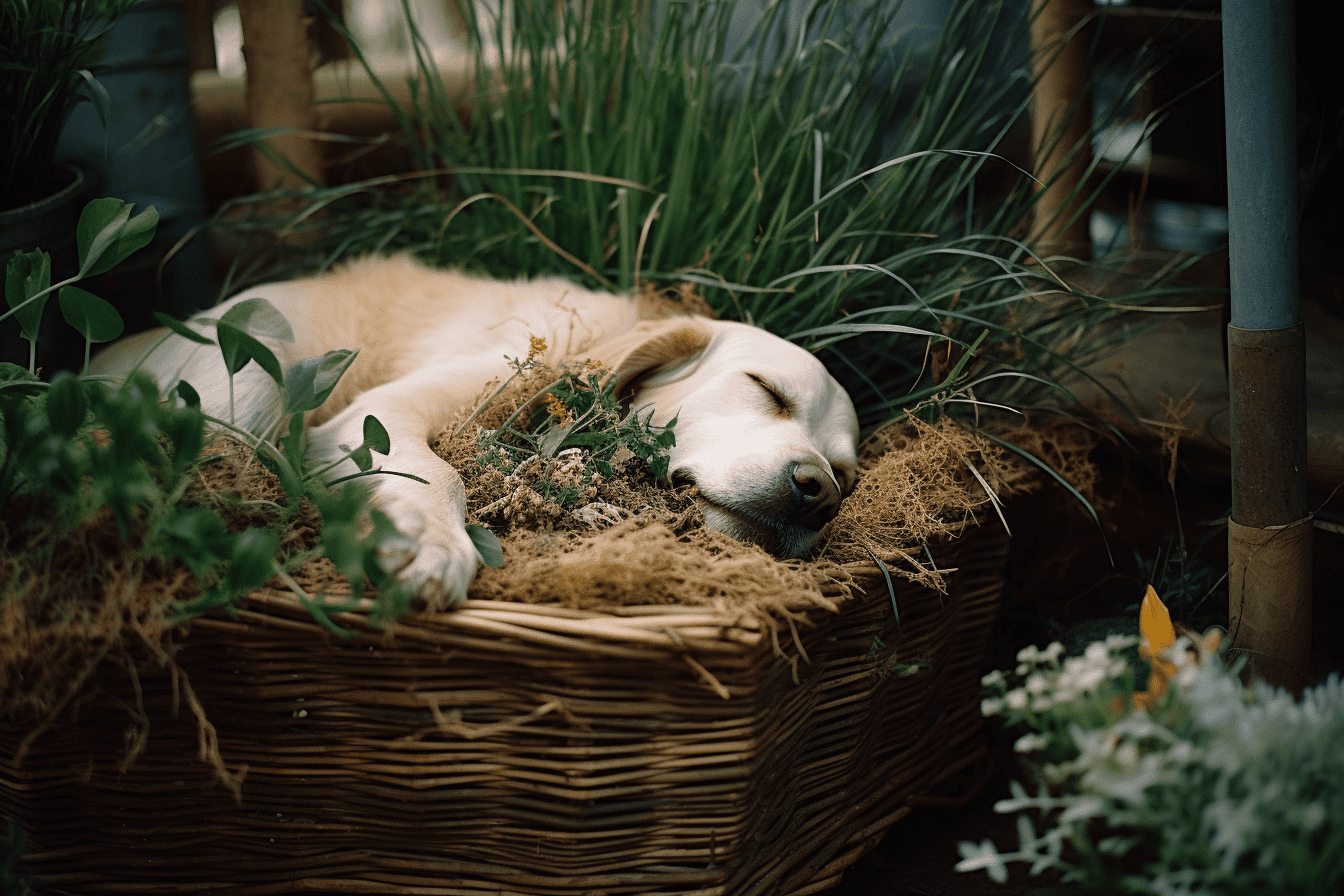I want to shed light on an important topic that often goes overlooked by dog owners – the potential allergy risk posed by the Moses in the Cradle plant. While this tropical plant with its waxy green and purple leaves may seem harmless, it can actually cause allergic reactions in dogs, leading to discomfort and health issues.
In this article, we will explore the dangers of Moses in the Cradle plant for dogs, share personal stories from my clinic, and provide tips for dog owners to keep their furry friends safe and healthy.
Key Takeaways From This Article
- Moses in the Cradle plant (Tradescantia spathacea) can pose a potential allergy risk for dogs, causing symptoms such as itching, redness, and inflammation of the skin, as well as respiratory issues or gastrointestinal upset if ingested.
- Not all dogs may be allergic to Moses in the Cradle plant, and the severity of the reaction can vary from one dog to another, depending on factors such as exposure, immune system, and individual sensitivity.
- Dog owners should take preventive measures to keep their dogs safe, such as identifying the plant, keeping dogs away from it, washing their paws and fur if they come into contact with it, and monitoring for symptoms.
- If allergic reactions occur, prompt consultation with a veterinarian for appropriate diagnosis and treatment is recommended.
- Being aware of the potential risks of Moses in the Cradle plant and taking proactive steps can help prevent allergic reactions and keep dogs healthy and comfortable.
The Dangers of Moses in the Cradle Plant for Dogs
Moses in the Cradle plant, scientifically known as Tradescantia spathacea, is a popular ornamental plant that is commonly found in gardens and indoor spaces. However, its lush foliage can pose a risk to dogs with allergies.
The plant contains compounds that can cause contact dermatitis in dogs, leading to symptoms such as itching, redness, and inflammation of the skin. Dogs may also develop other allergic reactions, such as respiratory issues or gastrointestinal upset if they ingest the plant.
Moses in the Cradle plant contains proteins that can potentially trigger allergic reactions in dogs. Proteins are known to be common allergens in many plants, and when dogs come into contact with the plant or its sap, it can lead to allergic reactions such as itching, redness, and inflammation on their skin.
At My Clinic
At my clinic, I have encountered several cases of dogs presenting with allergic reactions to Moses in the Cradle plant. One such case involved a Jack Russel Terrier named Jumper, who was brought in by his worried owner after developing severe itching and redness on his paws and belly.
Upon examination, we determined that Jumper had come into contact with Moses in the Cradle plant in his owner’s garden, which had triggered an allergic reaction. With appropriate treatment, including antihistamines and topical corticosteroids, Jumper’s symptoms improved, but the incident served as a cautionary tale for his owner and other dog owners about the potential dangers of this seemingly harmless plant.
Possible Challenges and Criticisms
It’s important to note that not all dogs may be allergic to Moses in the Cradle plant, and the severity of the reaction can vary from one dog to another. Some dogs may not show any symptoms even after coming into contact with the plant, while others may develop mild to severe allergic reactions.
Additionally, other factors such as the amount of exposure, the dog’s immune system, and the individual sensitivity of the dog may also play a role in determining the severity of the reaction. Therefore, it’s essential to understand that not all dogs may be affected, and the reaction can vary in each case.
Tips for Dog Owners
As a responsible dog owner, it’s crucial to be aware of the potential risks of Moses in the Cradle plant and take preventive measures to keep your furry friend safe.
Here are some tips:
- Identify the plant: Learn to identify Moses in the Cradle plant and avoid planting it in your garden or indoor spaces where your dog has access to.
- Keep your dog away from the plant: If you have Moses in the Cradle plant in your garden or indoor spaces, make sure your dog is kept away from it to prevent any contact or ingestion.
- Wash your dog’s paws and fur: If your dog comes into contact with Moses in the Cradle plant, immediately wash their paws and fur thoroughly with mild soap and water to remove any traces of the plant.
- Monitor for symptoms: Keep a close eye on your dog for any signs of allergic reactions, such as itching, redness, or inflammation of the skin, respiratory issues, or gastrointestinal upset. If you notice any such symptoms, consult your veterinarian promptly for appropriate diagnosis and treatment.
Conclusion
In conclusion, while Moses in the Cradle plant may seem like a harmless ornamental plant, it can pose a potential allergy risk for dogs. As a veterinarian, I have encountered several cases where dogs have developed allergic reactions to this plant, leading to discomfort and health issues.
It’s important for dog owners to be aware of this potential danger and take preventive measures to keep their furry friends safe.
By identifying the plant, keeping dogs away from it, washing their paws and fur if they come into contact with it, and monitoring for symptoms, dog owners can help prevent allergic reactions caused by Moses in the Cradle plant.

This article is written by…
Hayden Parker (He/Him) is a skilled veterinarian (DVM), and course instructor. With a focus on high professional competence, credibility, and respect.
As a family man, podcaster, and digital marketer, Hayden runs several websites.
His value statement centres on thoroughness, honesty, integrity, transparency, and respect for animals, owners, and fellow professionals.




